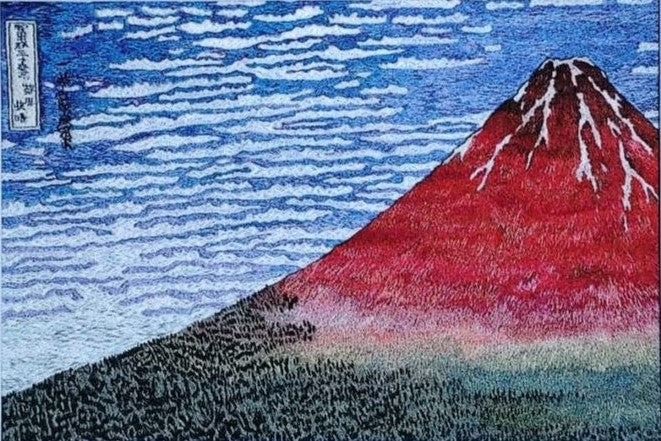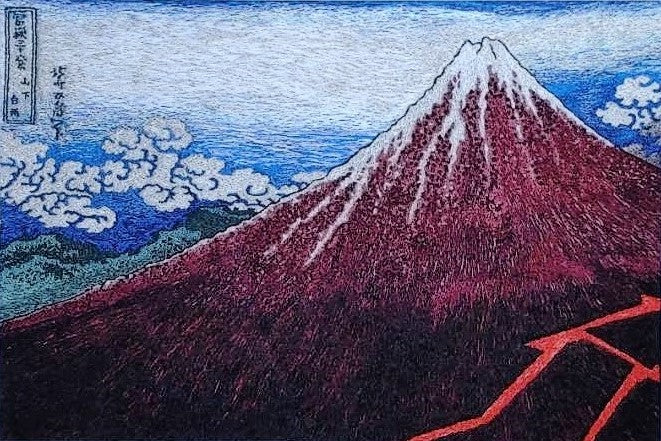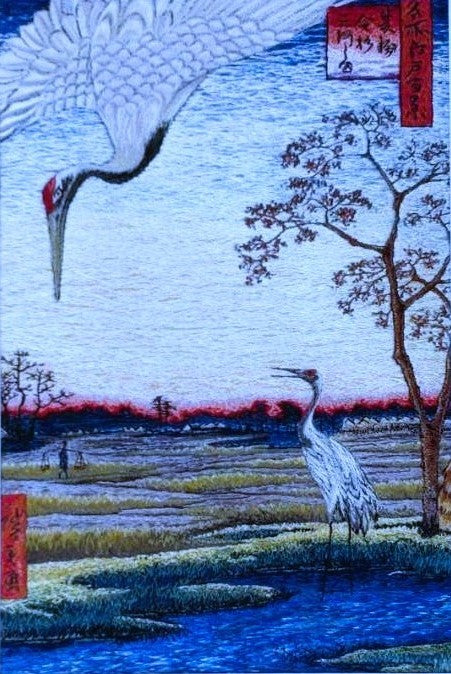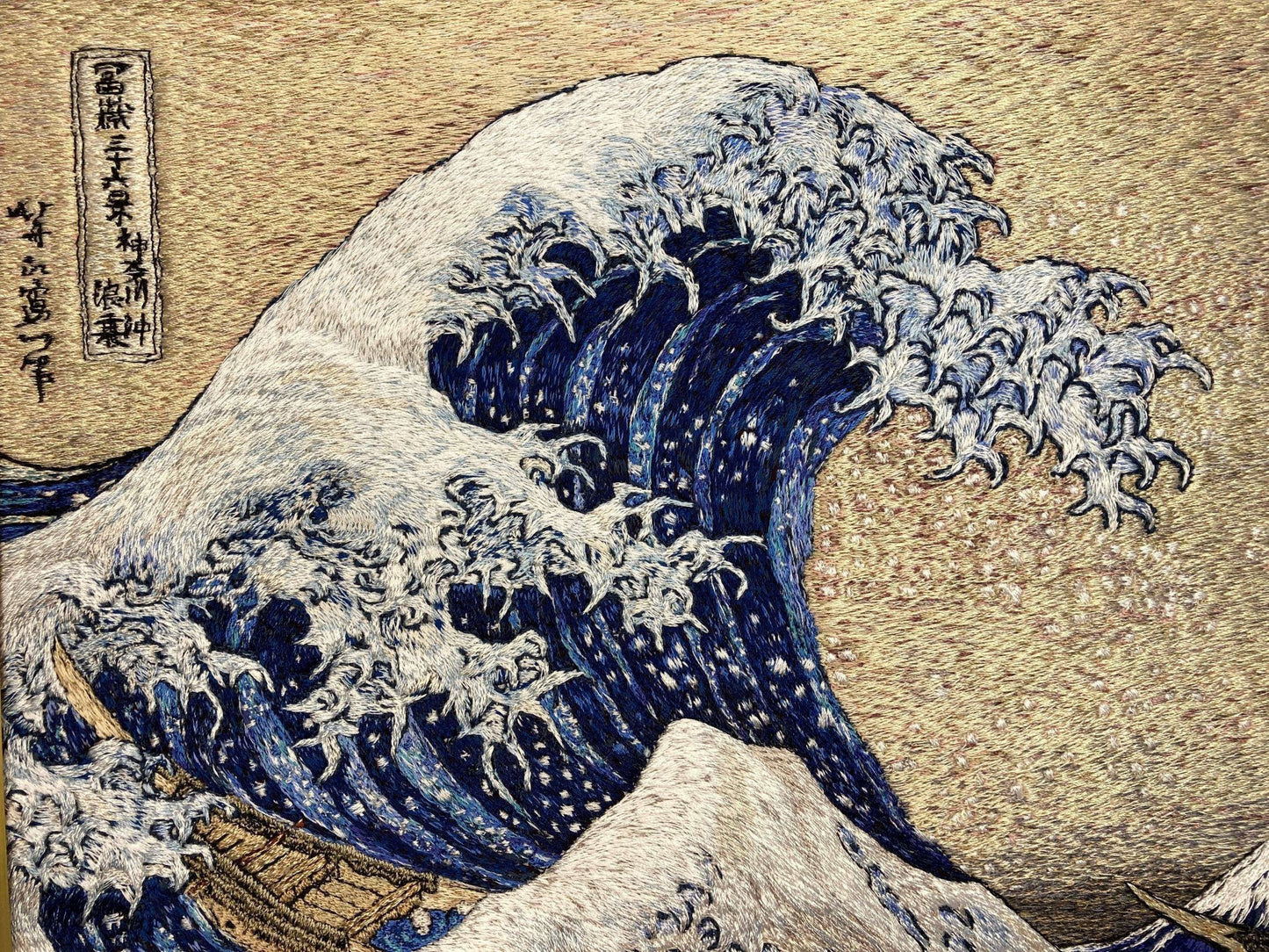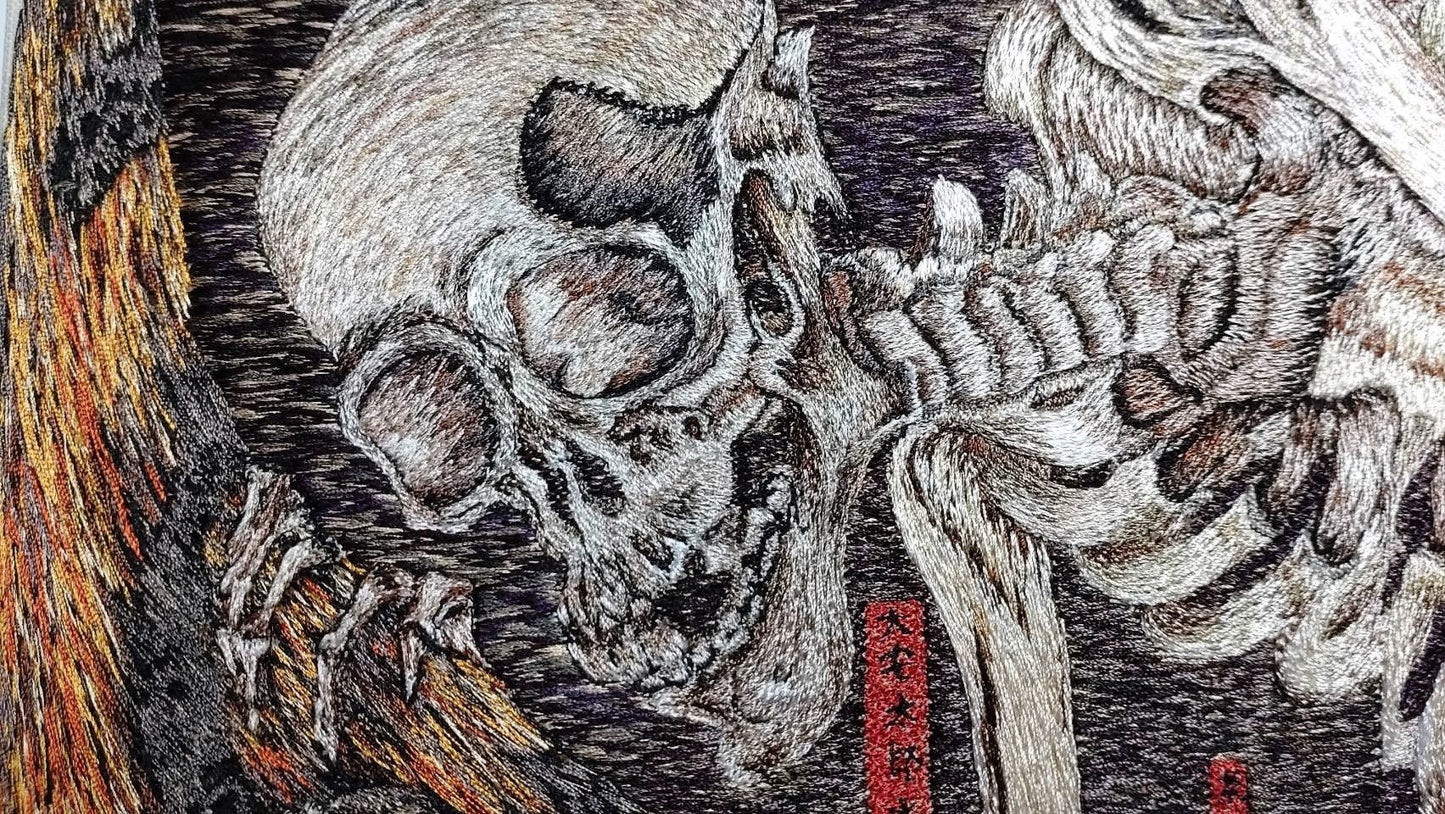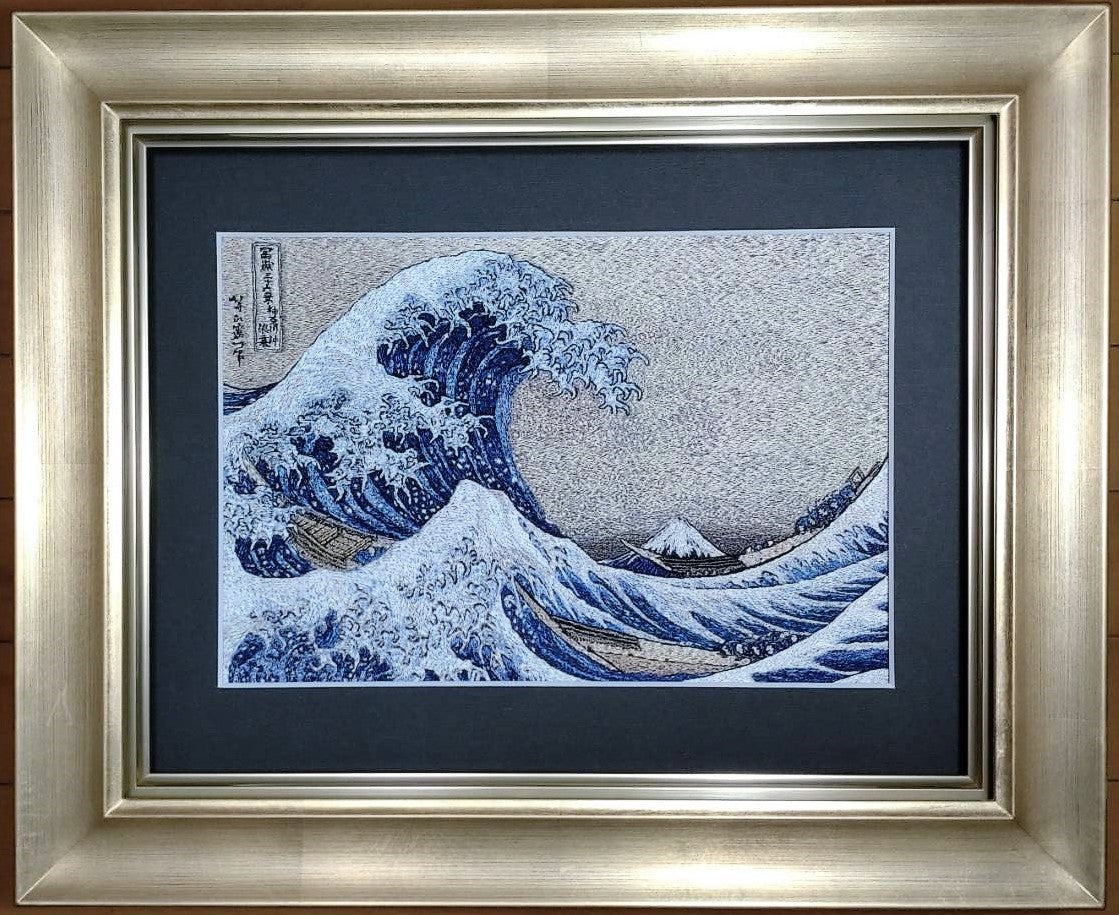FUKUDA SHOTEN
UKIYO-E embroidery
UKIYO-E embroidery
Couldn't load pickup availability
In addition to a foot pedal, horizontal balance sewing machines have a lever near the knee. The operator moves the knees by pressing the pedal and finishes the fabric by moving it with both hands. The operation of these sewing machines is delicate and takes years to master.
With the spread of computerized sewing machines, only a small number of artisans remain. The colors, landscape and expression of the finished product of horizontal embroidery, woven by artisans who spare no effort, change depending on the viewing angle, it is called "a picture made of threads".
These expensive and beautiful pieces are recommended as gifts and souvenirs. They are also used for unique and expensive bomber jackets.
FUKUDA SHOTEN: Since our company was established in 1980 in Isesaki City, Gunma Prefecture, we have been exclusively dedicated to embroidery processing and have more than 40 years of trust and experience in this field. Our artisans use a wide range of machines, from the historic horizontal beam machine to the most advanced industrial sewing machines, to create embroidered products. Orders, production and inspection are all carried out in our factory.
This new work is the result of a collaboration between a 200-year-old master of ukiyo-e printmaking and a modern artisan embroiderer. It attracts attention in exhibitions around the world as a new work of Japanese art.
For the global environment: Fukuda Shoten's yoko-furi (horizontal) embroidery uses "Ecolapos", an embroidery thread made from 100% recycled polyester from plastic bottles.
By minimizing oil consumption and efficiently using renewable resources, we contribute significantly to reducing our environmental impact. Additionally, there is absolutely no loss in the quality of the embroidery thread.
A.The Great Wave off Kanagawa (Kanagawa Okinamiura)/Hokusai Katsushika (1831-1833)
This is Hokusai's masterpiece, known abroad as "The Great Wave." In Japan, it was adopted as the motif for the new 1,000 yen note which will be used from 2024. The giant, raging waves that crash, threatening to engulf the ship, the power, the swell and the The intensity of the waves, the splashing water, and Mount Fuji standing proudly against it all. Hokusai's fascination is expressed through dozens of colorful threads. The craftsman himself sewed his favorite work with all his heart.
B.Triumphant wind and clear sky/Hokusai Katsushika (1831-1833)
Also known as "Red Fuji", this is an ukiyoe print by Katsushika Hokusai. Fuji sits majestically in front of a refreshing sky and seems to burn red. To express the bright blue of the sky and the vermillion of the mountain range, many different colored threads were layered. The blue of the sky and the white of the clouds are also subtly modified to create a sense of perspective. Fuji's expression changes slightly depending on the viewing angle.
C.The Storm Under the Mountain Top (Yamashita Hakusui)/Hokusai Katsushika (1831)
While Triumphant Wind is called "Red Fuji", the thunderstorm under the mountain peak is called "Black Fuji". White rain refers to an evening downpour. The red line that shines intensely is lightning. As the lightning bolt is lower than the summit, it is believed that Hokusai wanted to express the height of Fuji. The nobility and resilience of Fuji, with the clear sky at the top and the black darkness at the foot of the mountain under the lightning, so that the weather differs from top to bottom. “It was very difficult and confusing to depict Fuji, a symbol of Japan, with black thread, I took a long time to finish it. I hope you can feel the dynamism of the earth, the three-dimensionality of embroidery, the depth of black and my respect for Hokusai.
D.Takiyasha the Witch and the Skeleton Ghost (Soma no Furudairi)/Kuniyoshi Utagawa(1845-46)
This ukiyoe print with its huge skeleton is very impressive and exudes a different, frightening power. It is the work of Utagawa Kuniyoshi. Located in the ancient inner courtyard, it depicts a revenge plot by the Shogun's descendants. Kuniyoshi is said to have carefully studied Western anatomical drawings and used them in his realistic depiction of skeletons. The artisan himself observed the human spine and the way the muscles were attached when he embroidered this work. “Whether the threads line up horizontally or vertically... it makes a big difference in the impression of the work. The skeletons in this piece were very difficult to make because I wanted to make the bones look muscular, bumpy, rough, bulky and, above all, monstrous. I finished it trying to make the most of the charm of the yarn. »
E.Musashi Miyamoto and the giant whale/Kuniyoshi Utagawa (1848-1853)
Also known as "Miyamoto Musashi's Whaling". It depicts a scene from one of the legends of the time, of Musashi's training, in which he kills a giant whale. The large whale that covers the entire work is oppressive. The raging surface of the sea seems unstable. The character of Musashi, who opposes it without fear, is very courageous and reliable, he has a small but very big presence. I wanted to convey the power of the dynamic whale and Musashi's courageous fight. So I worked hard to create a three-dimensional effect and a sense of realism by layering the threads as many times as possible on the horizontal pendulum sewing machine.
F.Kanasugi Street in Mikawashima, Minowa (Minowa Kanasugi Mikawashima)/Hiroshige Utagawa (1857)
This work, which represents two graceful-looking cranes, is by Utagawa Hiroshige, famous for his “Fifty-three Stages of Tokaido”. During the Edo period, Mikawashima (now Higashi-Nippori, Arakawa-ku Ward) was a migration corridor for Japanese cranes, and every year in November. The cranes were fed there. The difficult parts to express in embroidery were the wings of the cranes and the swamp in the foreground. It took me a long time to make the cranes flying just above look beautiful and graceful, and I hope you can see the immensity of the earth stretching into the distance in a sense of peace.
Product Details:
Size (embroidery): H22 cm x L33 cm (H33 cm x L22 cm for F)
(frame): H42.5 cm x L53 cm (H53 cm x L42.5 cm for F)
Weight: 2.8 kg
Material (embroidery) : thread, fabric (frame): UV acrylic, wood, plastic
*Customs duties and VAT will be charged upon receipt.
*These items cannot be returned for convenience.
Made in Gunma, JAPAN

